Connect the Dots Events Continue to Plant Seeds of Learning
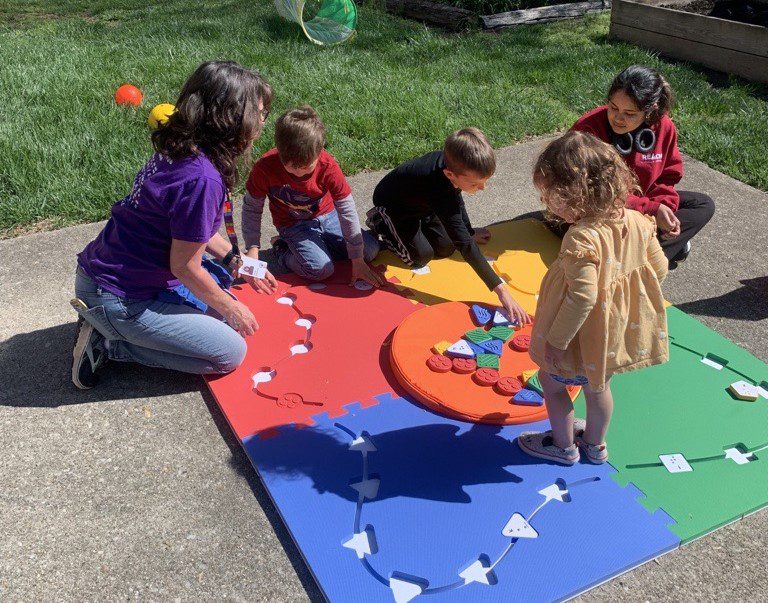
Spring is here and our Connect the Dots, powered by PNC, events have continued to blossom and grow! March’s “How Do People who are Blind or Low Vision Read?” took place on March 30 at the Highlands Shelby Park Library and April’s “Career: Sports and Physical Education” took place on April 13 at the Iroquois Library. Connect the Dots focuses on educating children and their families about how people who are blind or low vision interact in a world that is not always accessible to them. At these events, participants can learn about perspectives and challenges they might not know or think about regularly and how they can help and spread awareness. The activities and volunteers at our March and April events continued to help plant seeds of knowledge so the children who participated can grow and cultivate a world of inclusivity for all.
How Do People who are Blind or Low Vision Read?
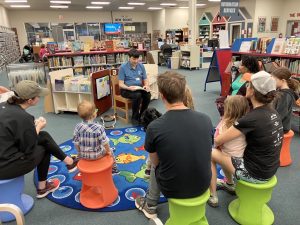
Reading is important for everyone! Through hands-on activities and story times at our March event, families learned how some people who are blind or low vision read and about the technologies that empower them. Getting hands-on with everyday materials and state-of-the-art technology, children got to discover the joys of accessible reading: like how tactile books can help the reader gain a better understanding of stories, how screen-readers catch mistakes, how magnification devices and large print ease eye strain, the basics of braille, and more. When people who are blind orlow vision have access to these types of assistive reading materials, it allows them to independently explore, learn new things, and expand their imagination.
Career: Sports and Physical Education
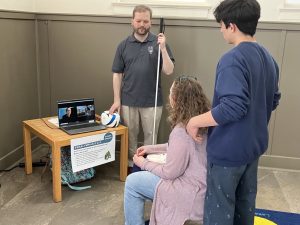
Some people play sports as a career, others play sports as a hobby. Whether playing professionally or just for fun, staying active is important for living a healthy, balanced life. People who are blind or low vision can run, swim, participate in gym class, and ultimately, crush their athletic competition. Access in athletics and physical education allows everyone to participate in sports fairly. Through various activities at our April event, families learned about the intersections of disability and play, accessible recreation technology, and paralympic sports. When families first arrived at the library, they were greeted by an outdoor access-forward obstacle course that helped them utilize other senses besides sight. There was also a station where families could learn about and play Goalball. Participants had the special opportunity to talk to Amanda Dennis, Goalball Paralympian and APH employee. Amanda was there via zoom to talk to families and answer any questions they had about the Paralympics and all things sports. Learn more about Goalball in our blog Learning About Goalball from a Paralympian.
Don’t forget to check out the full list of Connect the Dots events!
Share this article.
Related articles
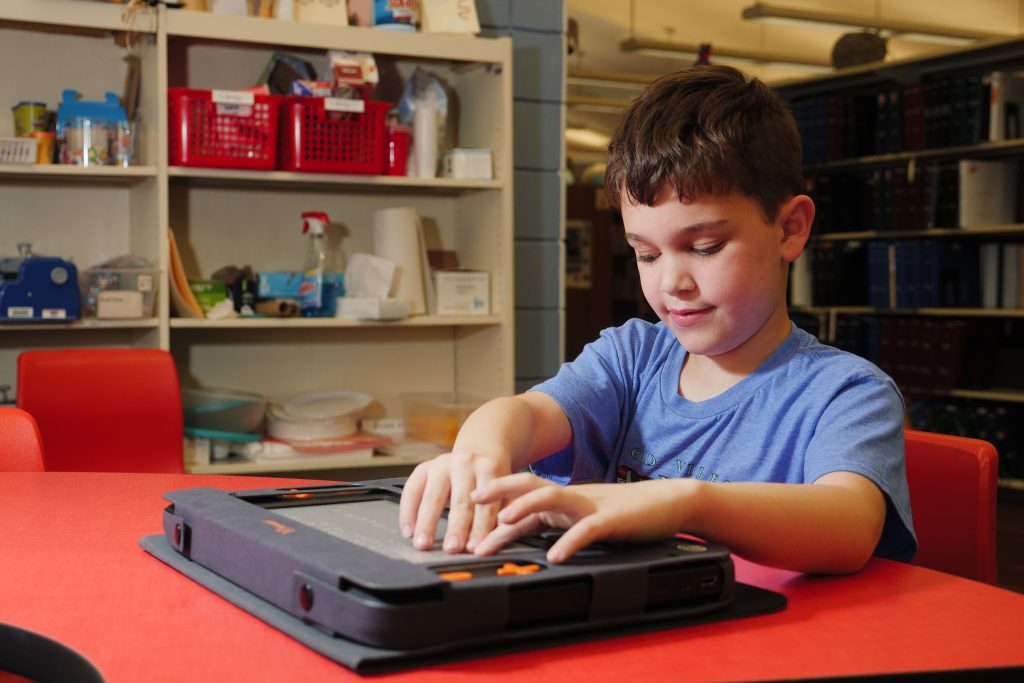
Developing Reading and Spelling Skills on the Monarch
Literacy is one of the cornerstones of education. APH’s Monarch is overcoming obstacles to enhance reading and spelling skills for...
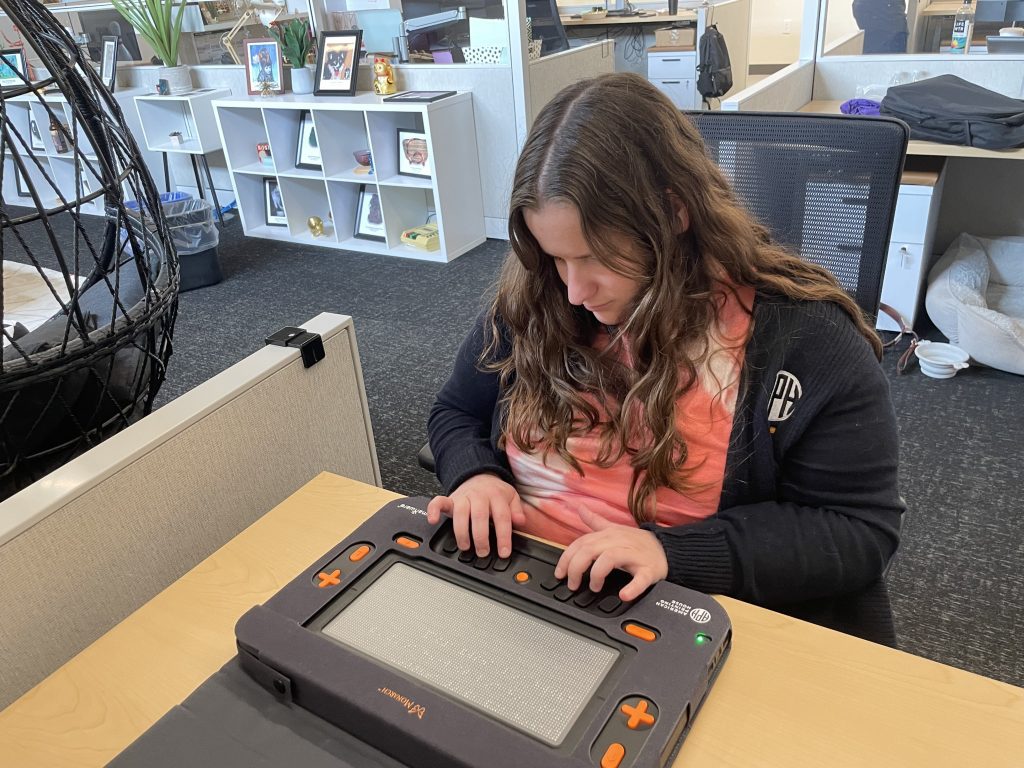
APH’s Jessica Minneci Discovers a Literary World on the Monarch
Jessica Minneci, APH’s Communications Associate, composes blogs during work and spends her nights drafting novels. One-line braille displays assist with...
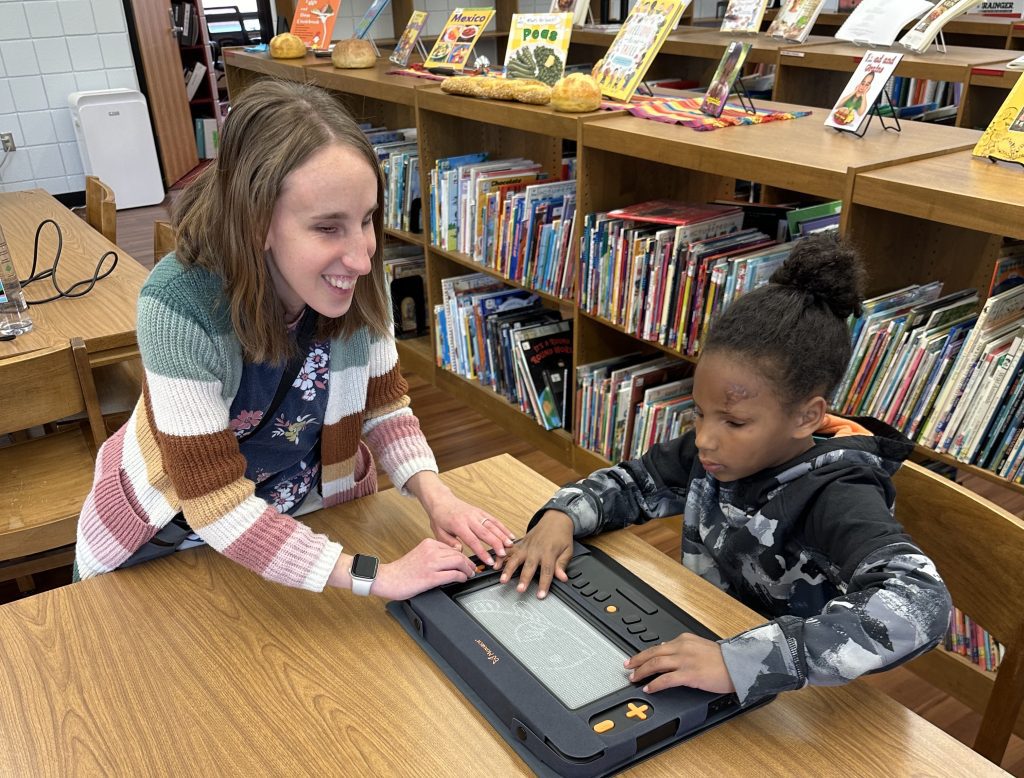
Leveling the Playing Field: Perspective of a DeafBlind User
Danielle Burton, APH’s Communications Accessibility Editor, has long hoped for a piece of access technology that levels the playing field...
